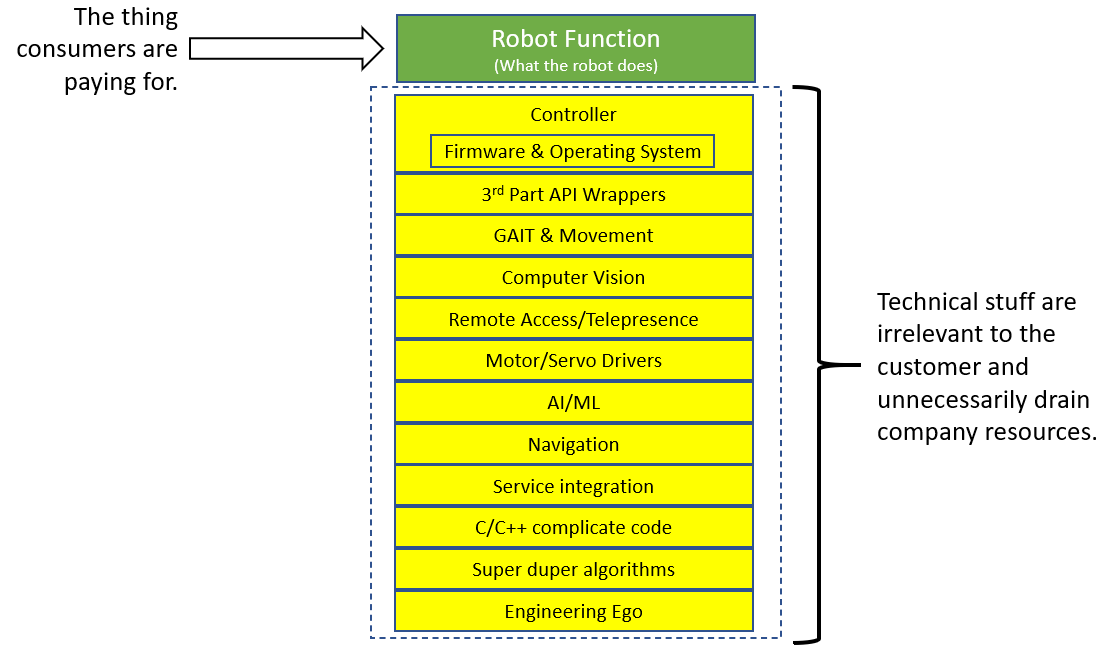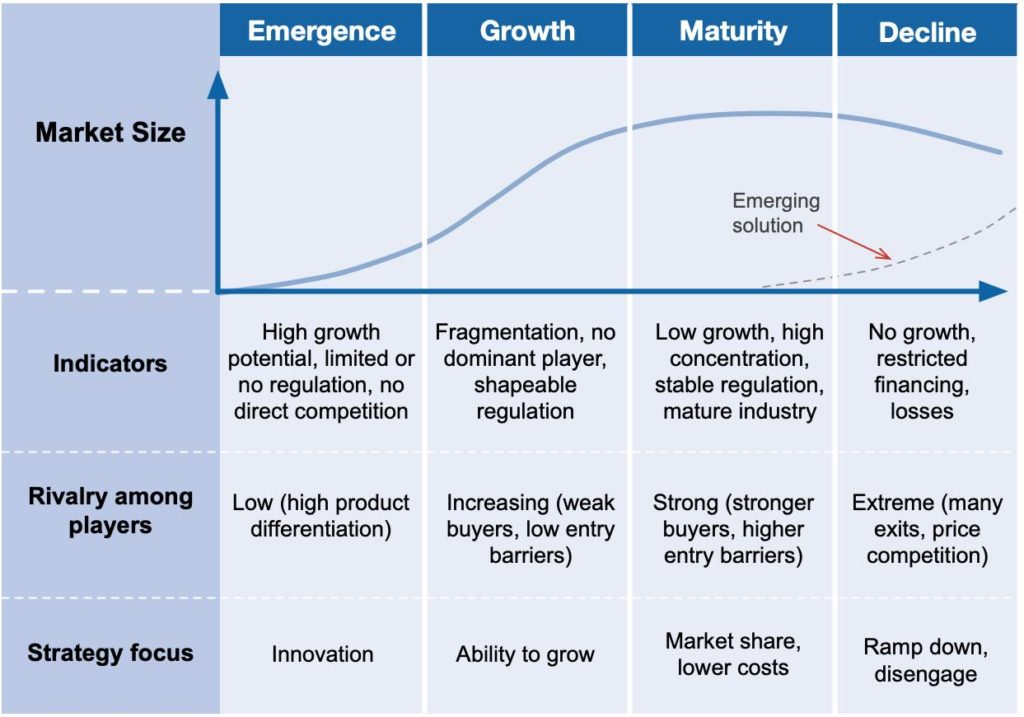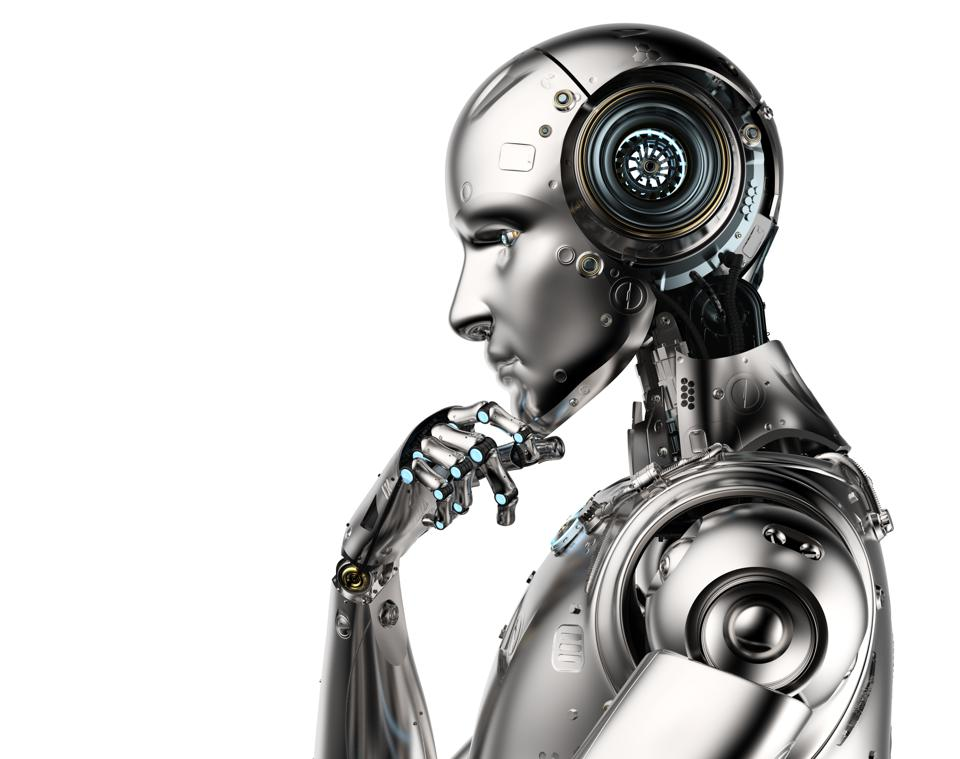
RIP: Anki, Jibo, Baxter, Mayfield, etc...
History foretells the fate of robot companies that attempt the burden of building and sustaining "the full-stack." Similar outcomes have affected companies from all industries where the founding partners were engineers. Today, we begin to ponder the question of where are the robots? Most importantly, why have so many robot companies failed, and what can we do to help robot companies succeed?

Perhaps the noise from social media, politics, and the current Covid-19 situation has caused startups and the investment community to forget a vital part of the industry life cycle stages. Organizations might have also overlooked this because it has also been several years since a new industry has emerged. Even the last few personal-computer sub-industries of mobile devices/apps, VR/AR, etc., have inherited sectors from existing mature and proven industries.

Robotics is a unique industry, albeit not too different from the personal-computer evolution, where multiple disciplines united to form a consumer product. The Personal Computer took many decades to influence and support sub-industries of software, hardware peripherals, and a wide range of use cases. Today, a computing device is user-friendly and esthetically pleasing, and the complex engineering disciplines are well hidden (CPU, operating system, drivers, power management, etc.). Readers may recall early personal-computer diagrams that included input, output, processing, and storage devices. Even earlier than the 1980's personal-computer, a computer consisted of even more complicated engineering disciplines that seemed impossible to scale to what we have today. Today, a computing device is common-place, and the components that make up computing devices are not taught in school as they once were.
The Revolution of Robot Platforms
Today, a child can operate a computing device before knowing how to speak. This results from a mature industry in which every contributor plays their strength by focusing on what they do best when contributing to product development. For example, some profitable companies make integrated circuits with a single function of performing mathematical floating-point calculations incredibly fast; because that is their strength. Another company will manufacturer a button or connector because that is their strength. Again, another produces batteries because it is their strength. The distribution of these disciplines in computing is how organizations can build platforms like Unity, Android, and Wix. Creative entrepreneurs use these platforms to make products that seamlessly integrate with our lives as tools and entertainment. What will it take for the robotics industry to distribute disciplines across specialists and enable creative entrepreneurs to make robot products rather than engineers? Imagine the impact that robot products made by creative entrepreneurs would have on our lives!
So, Where Is My Robot?
 This is the first blog entry in a series titled "Where Is My Robot?". We will cover the robot industry failures, strengths, and areas of improvement needed to fulfill consumer and financial potential. We will reflect on the fallen venture-backed giants that attempted to skip the industry life-cycle steps, such as Baxter, Anki, Jibo, Mayfield, Romo, and many others.
This is the first blog entry in a series titled "Where Is My Robot?". We will cover the robot industry failures, strengths, and areas of improvement needed to fulfill consumer and financial potential. We will reflect on the fallen venture-backed giants that attempted to skip the industry life-cycle steps, such as Baxter, Anki, Jibo, Mayfield, Romo, and many others.
We will examine organizations that repeat Synthiam's message that "too many robot companies focus on the robot and not the business"; however, these same organizations build complex solutions targeted at engineers instead of creative entrepreneurs. In this article by TechCrunch, hardware manufacturers use Synthiam's message that "making robots should be easy" while contrarily designing products targeted at engineers.
In this "Where Is My Robot?" series, other subjects we will discuss are operating system choices that support rapid prototyping for creative entrepreneurs. Most importantly, how using Linux for r&d increases the barrier of entry, adds unneeded operational complexities, and limits productive creativity.
Provide feedback in the comments of topics in this area you would like to see covered. See you in the next blog entry - stay tuned!

Canada has some real generous grants for research. Most of these companies in Canada are actually funded by the government - so it's mostly tax money so they're safe to push limits. The original version of their robots used compressors, but now they're using electric motors. I can't say much more about the type used due to NDA.
Would you make a human-looking robot again?
The term robot has become synonymous with a machine that can complete a repetitive task. I think we need to move away from that term and focus on Robotics the usage of Robots in conjunction with higher level software, AI, ML to perform missions and complete goals autonomously. The current global robotics market is approx 121 Billion and it is estimated to grow to 186 Billion by 2028. I believe the market is much larger than this but won't be fully realized until robotics achieve and level of mobility, intelligence and skills necessary to perform a large number of high value missions autonomously. This will not happen until we see real investment in this space. It will take a major shift in investor confidence to move real money into the robotics market (Just like it did in the Autonomous vehicle market). The catalyst unfortunately will be higher wages when we finally increase the minimum wage in the US from $7.25 per hour to $15 or introduce Universal Basic Income so people will not want to perform manual tasks. Until there is a business case with an ROI, the robotics industry will continue to grow at the current snails pace.
That's great! There are some robot grants here as well but the US sucks trying to get them. Need a really great grant writer to apply for them.
The robot on the left is still pneumatic but the one on the right looks to be motors. I believe the awful Sophia was Robotis servos. I remember seeing them in the open-source files they have online (arms). Often these types of movements can be delivered from cables and housings..they are quiet and all the motors live elsewhere so you don't hear the sound. These thin strong cables use what we call pull-pull motion to achieve fluid movement.
Yeah I've had a version 3 of Alan on the drawing board for some time. I've also I designed a full-body for him on like a sci fi hoverboard that he can also sit on. But, again to what ends??....for consumer consumption (whats it do?) or kits to be sold for the DIY fellas like inMoov. I can literally build anything that moves. And probably better than most funded robots with only me , myself and I as the team. Just requires patience and $$$.
Did I tell you about the meeting I had at CES in 2019? I couldn't believe it and thought it was a joke. It was not a joke. A high-profile person with deep pockets approached Robomodix about starting an R and D company with $$millions to back and create..a robot to download the soul/memories and conscience into and live forever. I'm not kidding. Real discussion, real person, real money. Some people want to live forever with their wealth. Needless to say I passed...too much pressure to deliver the truth..impossible with today's technology
@nink - we've had so many projects on market research to identify the industry size.. it's ridiculous. First, something like 90% of the robot industry market value is in manufacturing automation. So that aligns exactly what you were saying that there needs to be a way to separate what our type of robots are. I believe Robots 2.0 is the way to go on that.
Secondly, the rest of the robot industry market revenue is mostly hobby kits and toys. The funny thing about iRobot is depending on the industry report, they may or may not be considered a robot and instead considered an appliance.
Last and most important, is that every industry research report has a different number about the industry size. And every report also has a different number for the forecast. It's almost as if the research reports are paid to include company forecasts. Oh wait, that's exactly what happens . Every week or two, we receive CB Insights or some research company asking if we'd like to pay to be included in their reports. Think about that for a second - in order for their reports to be "accurate", they want the companies to pay to have their forecasts included in the report. So how do they validate the forecasts? They actually don't - because their assumption is that if a company is paying, it must be a valid financial forecast.
. Every week or two, we receive CB Insights or some research company asking if we'd like to pay to be included in their reports. Think about that for a second - in order for their reports to be "accurate", they want the companies to pay to have their forecasts included in the report. So how do they validate the forecasts? They actually don't - because their assumption is that if a company is paying, it must be a valid financial forecast.
The trouble with today's economy is that it has evolved enough to have a price on absolutely everything. Even when certain websites release "top robots of 2020" or "best cars of 2019" - all it takes is who pays the most. It really is that simple. But you must be wondering how can that be? Well, do you remember when EZ-Robot had been voted "the best of" in the past? It's because we had paid - yup, that's right. We had paid many times to be featured in magazines and articles - and one day i just said enough is enough.
As a consumer, you probably guessed this is how it works - but at the same time, wonder how can this be ethical? Ethics have been replaced with legal disclaimers and contractual commitments. This means that simply by viewing some content on a website, you have actually agreed to their terms of use or user agreement. Because access to the agreements is located on the website, you must have read it and therefore agreed to it. If you read into the industry insight terms, you'll notice that there are many round-about ways of them saying "the data is to the best of our understanding".
Boy, I can go on and on about this - but really what it comes down to is it is incredibly difficult to run an ethical business in today's economy. There are companies selling terrible software for robot programming that costs thousands of dollars - and i won't consider helping their SEO by mentioning them on Synthiam's website in this post.
We had a conference call with one of our customers last night who is building a surgical robot with ARC. The reason they ended up using ARC was that they had been using something else which had cost almost a thousand USD per month and it was more limited than ARC. So conversations like that make them wonder why we would charge so little? I receive that question all the time - why is Synthiam only $8/m when alternatives are thousands?
It comes down to supplying the masses. @Perry asked if we could just remove some of the EZB indexes in the connection control because "no one probably uses them". Well, actually a lot of people use them and more. I wrote a blog post last week about the error count decrease, and that's somewhat of a sign to show how many people and companies actually use ARC. Think of it this way, a lot of people use Microsoft Windows but when is the last time you posted on Microsoft's forum? Scaling ARC with a low monthly cost is my way of building an ethical business that can grow with the industry.
Do I believe the Robots 2.0 industry is 120 billion USD? Not a chance - not even close. We're in the millions if that. Take a look at Boston Dynamics, for example. Somehow, they have a market share even though there's no revenue. This is because of their "forecasts" sales - and they have been doing that for many many years. "Oh, next year we'll have sales". "Actually this next year we'll have sales". "Okay, this is the upcoming year for sales". Fact is, no one wants that dog - it's entertaining and might as well sit in a closet next to Honda Asmo
First - your ideas need to become real. Second - build it on a platform like Synthiam to reduce operating expenses and MSRP. Third - change the world.
My 2 cents:
I came from designing images for entertainers for 25 years in Nashville.
I came to know what the uncanny valley was when I created Mr. Roman - so I set out to create Mr. Metal, better response.
Being a new person in this robot arena, unbeknownst to me was robots that look like humans are frowned upon.
This must be why Alexa is so popular, no head, lol...
I was not aware or thinking of all the movies, scary ones with evil talking dolls.
Even my grandkids have a dislike for my two Ventriloquist Dolls.
So to me any robot for personal use should resemble a robot in whatever capacity.
I remember when I first saw "Ez-robot" - the name attracted me - "easy". I never did anything electrical, with servos, motors, controllers, and all the rest. This was not in my world.
Now I am hooked :-)
I do enjoy Synthiam and never thought I would learn so many things from all you guys, happy you are here for us all DJ.